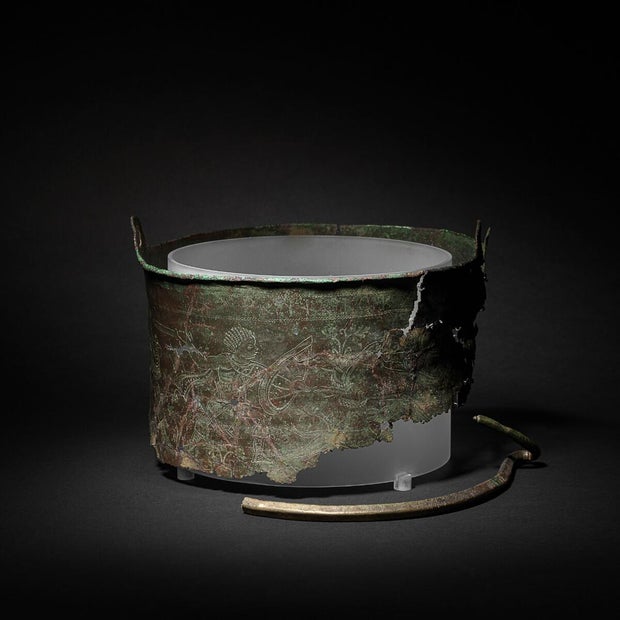A 1,500-year-old bucket discovered in England has been identified as an ancient cremation burial vessel, experts said.
The 6th-century bucket was found at Sutton Hoo, an archaeological site near Suffolk, England, that is home to two ancient cemeteries. Fragments of the bucket, named the Bromeswell bucket, were first found in 1986. Researchers found more pieces of the relic last year during an excavation by Time Team, a British TV show where archaeologists conduct excavations on-camera.
An analysis of the newly-discovered pieces determined that Time Team had found the entire base of the bucket, and that it contained human bone fragments, the National Trust, a U.K.-based conservation organization, said in a news release. The bones included part of an ankle bone and fragments of a skull, which the National Trust said was proof of an "early Anglo-Saxon cremation burial."

Angus Wainwright, a National Trust archaeologist, said in the news release that the burial appeared to be "very special," and that researchers will conduct further analysis.
There were also animal bones inside the bucket, which is made of copper alloy and is decorated with a hunting scene. The National Trust said the bones were larger than those of a pig, and noted that horses were often included on funeral pyres as a symbol of status during this time. The bones will undergo radiocarbon dating, the National Trust said.
"We knew that this bucket would have been a rare and prized possession back in Anglo-Saxon times, but it's always been a mystery why it was buried," Wainwright said. "Now we know it was used to contain the remains of an important person in the Sutton Hoo community."

The bucket was made in the Byzantine Empire and may have been a diplomatic gift or acquired by a mercenary Saxon soldier, the National Trust said. The vessel is decorated with a scene of men armed with swords and shields. The scene also includes lions and dogs. The newest fragments help complete the picture, showing feet, paws, the base of shields and the face of one hunting man.
Also inside the bucket was a double-sided comb that the National Trust said was likely made from antler. The agency said its researchers hope ancient DNA can be recovered from the object. The item was not burned in the cremation process, the National Trust noted. The inclusion of such combs in other burial sites suggest that "personal appearance and grooming was important to the Anglo-Saxons." The comb could also have been used to control lice, the trust said.
Plant remains were found during the excavation of the bucket pieces. Analysis of those pieces could "reveal more about the climate and seasonality around the time the bucket was buried," the National Trust said.
Time Team aired a documentary about the discovery and year-long analysis project earlier in May. The group will conduct more research at Sutton Hoo through mid-June.
Kerry Breen is a news editor at CBSNews.com. A graduate of New York University's Arthur L. Carter School of Journalism, she previously worked at NBC News' TODAY Digital. She covers current events, breaking news and issues including substance use.












